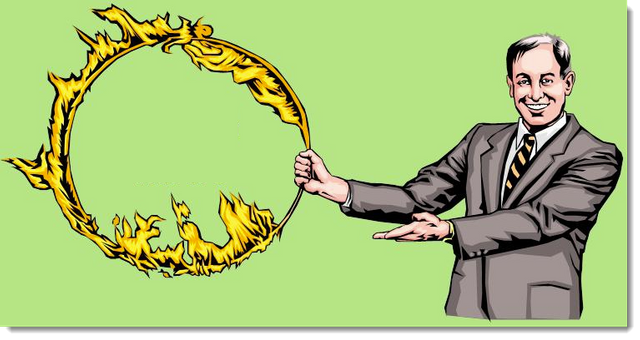Jumping through hoops: What does it take to get listed on a major exchange?
Binance. OKex. Bittrex. Bitmex. Kucoin.
These are some of the big kahunas of the cryptocurrency exchange world. If a token or coin makes it on to one or more of these exchanges, it has a good chance of being more successful and experiencing broader adoption.
In the case of Binance especially, listings can result in massive pumps of newly introduced currencies. This happened recently with Bytecoin (albeit under some suspicious circumstances). It rocketed in value from about 1 cent USD to about 20 cents, then rapidly crashed back down to 1 cent within a day or so. This was, of course, due to some severe liquidity issues, but it brought a great deal of attention to the newly listed coin.
Even True USD - a stable coin - that is - a coin that is paired to the value of the fiat U.S. dollar and is redeemable for fiat USD, experienced a ridiculous amount of speculative buying that resulted in over-valuation up to $1.30, just by being listed on Binance. Traders were buying a stable coin, intended to be pegged at $1 USD for $1.30. Traders “in the know” must have been shaking their heads in disbelief. Most coins experience a major surge in popularity and adoption following their launching on Binance.
Granted, Binance has gained a bit of a reputation for its capacity to draw in a rush of new buyers once a new coin is launched. But what actually goes into deciding which projects get listed on a given exchange? Does it just come down to lump-sum payments to exchanges, or is there more to it?
Of course, the currency will need to demonstrate a utility and value, firstly. After all, an ERC20 token can be created after following a few steps from a YouTube video and copying and pasting some text, but that isn’t going to get it listed on a major exchange. It needs to demonstrate a solution to a problem that makes it have a marketable appeal.
The currency also needs to be secure, checked over to ensure that it can’t be exploited in a way that would be harmful to holders of the coin (not that this issue has always prevented a listing… I’m looking at you, Verge…). From there, it’s tougher to say what happens next from one exchange to another. It’s all veiled in the secrecy of NDA’s and private meetings.
Of course, not every coin or token will get to be listed in any of the bigger exchanges. Smaller exchanges like Bitbay or Coss.io serve a purpose in availing these currencies to the broader market with the hope of adoption to one of the larger volume exchanges. But it can be an important stepping stone to be seen as a legitimate offering before arriving on a larger stage. It's these smaller exchanges that can harbour hidden gems that might some day have much higher value when more broadly available.
In some instances, developers have approached exchanges and offered large sums of money. It seems like this method of appealing to exchanges is losing its effect these days. More often, it appears currencies need a little more qualification than mere bags of money. It is likely that now that the industry is growing and there is more interconnectedness, that there is an element of “who you know, not what you know" - people who know people in the industry are likely involved in all kinds of agreements of this nature. Yet other coins are going the route of proving their worth through the social credit they can gather up from their community by garnering support in social media, such as Twitter.
It seems like this might be a better approach - merit-based recognition and more emphasis on building support through the community and via word of mouth. It feels a little more transparent and honest than just secretly throwing thousands (or millions?) of dollars at an exchange in the hopes of getting listed. But one has to wonder, what is going on behind the closed doors of exchanges as they sift through all those token listing applications?
In the future, more and more traders will use decentralized exchanges. This whole process of getting listed on exchanges may eventually fade into memory. But as of now, centralized exchanges are still the primary way that almost all traders learn about and acquire new tokens and coins. As the cryptocurrency economy continues to grow up, will things become more transparent, or simply more convoluted?
For now, the big kahunas are still in charge.
Sources:
https://www.binance.com/
https://www.okex.com/
image source:
http://staffsource.ie/job-assessment-tests-dont-jump-through-hoops/

another great piece of work
obviously upvoted :) Piotr
the market is in an infant stage. Let us see if projects solving real problem will finally remain. Do you think energi mine might be one of them? :)
Energi Token looks interesting. It has a novel use-case that could reach a broader appeal than many other ERC20 tokens.
Great post!